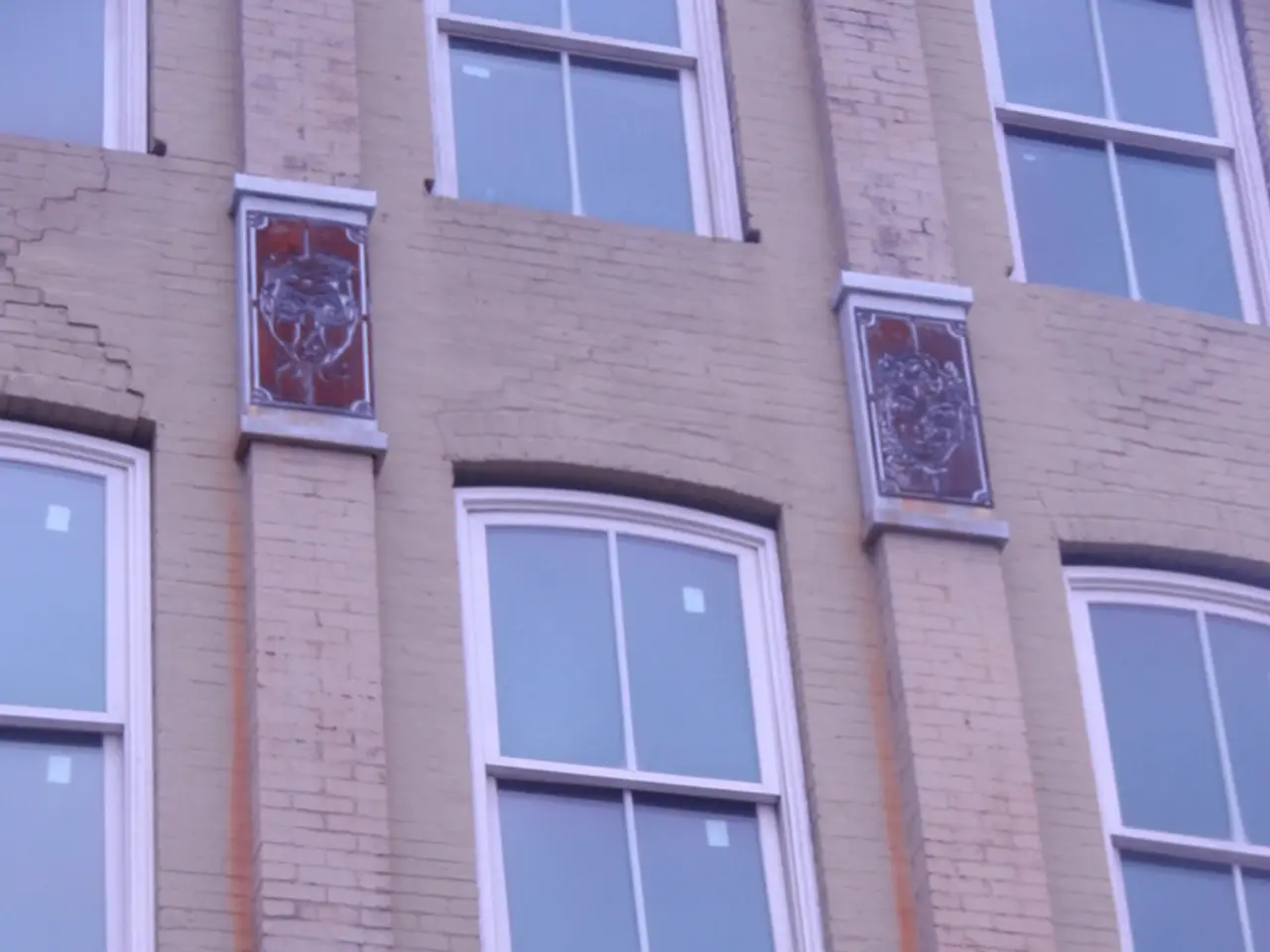7 advancements in window design, enhancing comfort, reducing upkeep, and potentially boosting safety
In the modern world, homeowners are increasingly seeking ways to improve energy efficiency, reduce heating and cooling costs, and enhance comfort in their living spaces. One area that has seen significant advancements is glazing, with a variety of innovative options now available for home windows.
Insulated Glass Units (IGUs) and Low-E Glass
Insulated Glass Units (IGUs) are a popular choice, featuring two or more glass panes separated by an air or gas-filled space. This design helps to reduce heat transfer, minimize condensation, and improve sound insulation, leading to reduced energy bills and increased comfort throughout the year [1].
Low-E (Low Emissivity) Glass, on the other hand, has a thin metallic coating that reflects infrared heat, blocking solar heat in summer and retaining interior heat in winter, while also filtering harmful UV rays that can cause fading of interiors [3].
Triple and Quadruple Glazing
For even greater energy savings, triple glazed windows incorporate three glass panes with insulating gas layers, providing superior energy savings by reducing heat loss and gain more than double glazing, and offering notable noise reduction — ideal for urban or noisy environments [5][1].
Quadruple glazing takes this further by adding a fourth pane, enhancing thermal insulation significantly and improving comfort by maintaining more stable indoor temperatures [4].
Heat Mirror Glazing and Superglass
Advanced coatings and internal reflective layers in Heat Mirror Glazing and Superglass allow for high-performance windows with slimmer profiles, increasing energy efficiency without adding bulk [2].
Low Iron Glass
Low Iron Glass removes the green tint caused by iron oxide impurities, resulting in ultra-clear glass preferred for architectural designs needing maximum clarity and natural light transmission [4].
Additional Benefits
These innovations contribute to lower energy consumption, reduced HVAC load, enhanced occupant comfort, better noise control, and protection from UV damage. Many of these energy-efficient glazing options may also qualify for tax credits or rebates, adding financial incentives beyond their comfort and environmental benefits [2][3][5].
Acoustic Glass, Solar Control Film, and Safety Glass
Acoustic glass, when double glazed, is installed with two different thicknesses of glass and an argon gas-filled cavity between to absorb more sound waves. Solar control film can be cut to size and applied using soapy water, helping to cool a room and protect furniture and flooring from fading [6].
Safety glass, such as laminated glass and toughened glass, can protect individuals from injury and improve home window security, particularly in low-level windows and doors [7].
Bird-Protection Glazing
Bird-protection glazing helps birds perceive the glass as an obstacle and avoid it, using a laminate within the glass units that makes a pattern visible under certain types of light [8].
Self-Cleaning Glass
The coating on the external pane of self-cleaning glass reacts with daylight to break down and loosen dirt, and it can be hosed with clean water when it doesn't rain [9].
In the UK, Glasgow-based Enviro Windows offers quadruple glazing with a U-value of 0.35 [10]. These innovative glazing options offer homeowners a wealth of choices to create comfortable, energy-efficient, and stylish living spaces.
[1] The Benefits of Triple Glazing
[2] Heat Mirror Glazing
[3] Low-E Glass Explained
[4] The Benefits of Low Iron Glass
[5] The Benefits of Quadruple Glazing
[6] Solar Control Film
[7] Laminated Glass
[8] Bird-Friendly Glass
[9] Self-Cleaning Glass
[10] Quadruple Glazing with a U-Value of 0.35
- Homeowners can build their living spaces with enhanced energy efficiency and reduced heating and cooling costs by choosing Insulated Glass Units (IGUs) for their home windows.
- Low-E Glass, with its thin metallic coating, helps in reducing heating and cooling costs by reflecting infrared heat and filtering harmful UV rays.
- Triple glazed windows, featuring three glass panes with insulating gas layers, offer superior energy savings and noise reduction compared to double glazing.
- Quadruple glazing, which adds a fourth pane, significantly improves thermal insulation and maintains stable indoor temperatures.
- Advanced coatings and internal reflective layers in Heat Mirror Glazing and Superglass increase energy efficiency, making high-performance windows slimmer without adding bulk.
- Low Iron Glass, with its impurity-free composition, offers maximum clarity, natural light transmission, and architectural design flexibility.
- Acoustic glass, when double glazed, and solar control film contribute to lower energy consumption, reduced HVAC load, and better noise control.
- Safety glass like laminated and toughened glass enhances home window security, protecting individuals from injury.
- Bird-protection glazing and self-cleaning glass can also be incorporated into home design projects, offering additional benefits such as reduced maintenance and potential for increased safety for local wildlife.




